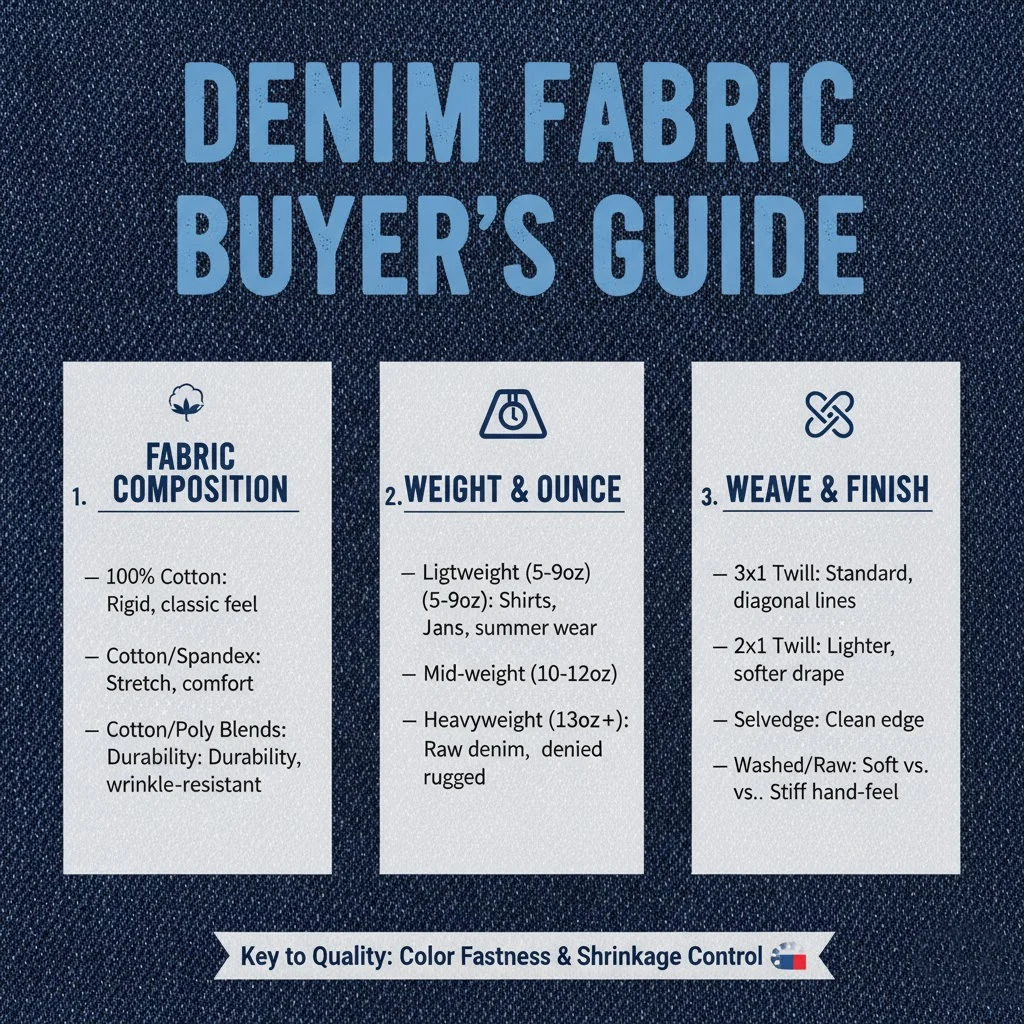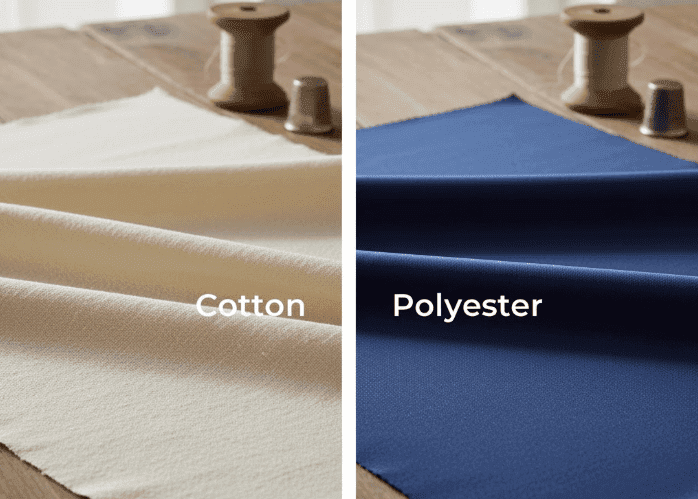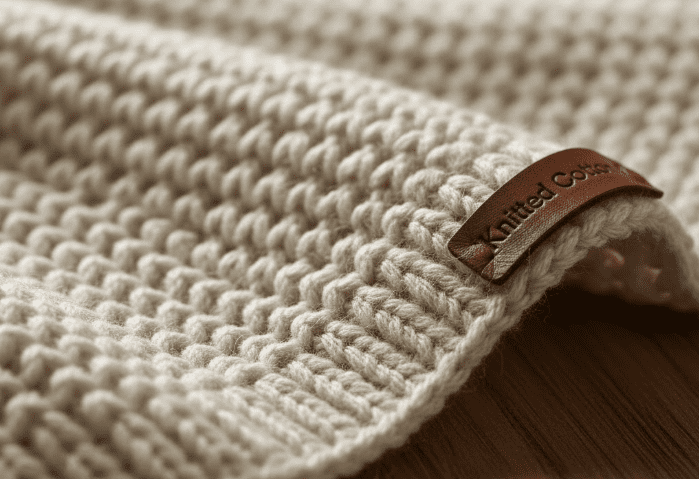Introduction
Have you ever faced the heartache of pulling a favorite 100% cotton t-shirt from the wash, only to find it has mysteriously shrunk? You’re not alone.
Your Ultimate Resource
Our comprehensive guide on how to wash pure cotton is here to solve that problem for good. We’ll move beyond guesswork and provide a science-backed, step-by-step process that demystifies cotton care. By the end of this, you’ll have the confidence to conquer laundry day, keeping every cotton piece in your collection looking and feeling brand new for years to come.
The Root of the Problem: Why Does Pure Cotton Shrink and Fade?
Before learning the “how,” let’s spend two minutes understanding the “why.” Knowing the science behind the problem will help you remember the solution forever. This knowledge is central to any good cotton laundry guide.
What is the science behind cotton shrinking?

The answer to why does cotton shrink lies in its love for water and its memory. Cotton fibers are primarily composed of cellulose, a substance that forms strong hydrogen bonds. During manufacturing, these fibers are put under constant tension as they are spun into yarn and woven into fabric. When you wash the fabric, especially with heat and agitation, two things happen:
1. Water Absorption: The hydrophilic cellulose fibers absorb a significant amount of water, causing them to swell and the hydrogen bonds to break.
2. Tension Release: This swelling and agitation allows the fibers to relax and release all that stored-up tension from the manufacturing process. As the fabric dries, the fibers settle into their new, more natural, and compact state, resulting in noticeable shrinkage.
What is the chemistry behind colors fading?

The problem of fading cotton clothes is a chemical one. Most cotton is dyed with reactive dyes, which form a strong covalent bond with the cellulose fibers. However, this bond can be broken. Factors like high heat, harsh detergents with high pH levels, or chlorine bleach can act as aggressive agents, chemically stripping these dye molecules away from the fibers and washing them down the drain, leaving your garments looking dull and aged.
Pre-Wash Prep: The First Step to Success
Proper care begins long before the machine starts. These simple preparation steps are what separate professional results from laundry accidents.
1: How to Correctly Read the Care Label?

The care label is your garment’s single most authoritative instruction manual. Manufacturers conduct specific tests on their fabrics, so their guidance is tailored. Understanding the laundry care symbols meaning is non-negotiable. Always check for the recommended water temperature and drying method. For a full list of symbols, you can reference the International Organization for Standardization’s guide (ISO 3758).
2: Why is sorting colors and weight so important?
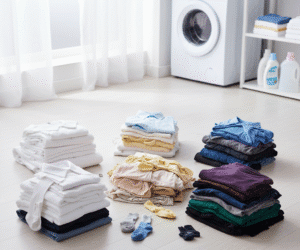
How to sort laundry by color is a fundamental rule to prevent dye transfer. Always separate your laundry into at least three piles: whites, light colors, and dark colors. But for truly professional care, add a fourth dimension: fabric weight. Washing heavy items like denim jeans with lightweight t-shirts can cause the rough denim to abrade and damage the delicate fibers of the shirts during the wash cycle.
3: How to pre-treat stains on cotton?
Tackling a stain before washing gives you the best chance of removing it completely.
Tools You’ll Need:

A clean white cloth, a gentle stain remover or a mix of clear dish soap and water.
Action Steps:
1. Place a clean, dry cloth under the stain to prevent it from bleeding through to the other side.
2. Apply 1-2 drops of the cleaning solution directly onto the stain. Avoid oversaturating the area.
(Imagine this): Instead of scrubbing wildly, which can damage fibers, gently blot the stain with another clean cloth. Use a dabbing motion, working from the outside edge of the stain toward the center. This lifting motion pulls the stain out rather than pushing it deeper. Let it sit for 5-10 minutes before washing.
The Ultimate Washing Process: Four Critical Steps
This is the heart of the entire care routine. Your choices here will directly determine your clothes’ fate. A key takeaway from this guide on how to wash pure cotton is to always be gentle.
Step 1: What temperature to wash cotton? (Most Critical!)

- Cold Water (≤30°C / 86°F): This is your best and safest choice. Modern detergents are formulated with enzymes that work powerfully even in cold water, so you don’t need to rely on heat for a great clean. This is the ultimate way to prevent cotton from shrinking and fading.
- Warm Water (≈40°C / 104°F): This is suitable for white or light-colored items that are more heavily soiled, like bedding and towels, as the warmth helps to loosen body oils and dirt more effectively.
- Hot Water (≥60°C / 140°F): Highest risk. Use this only for sanitizing very durable items like white hotel-style towels or cleaning cloths when hygiene is the top priority.
Step 2: What is the best detergent and cycle for cotton?
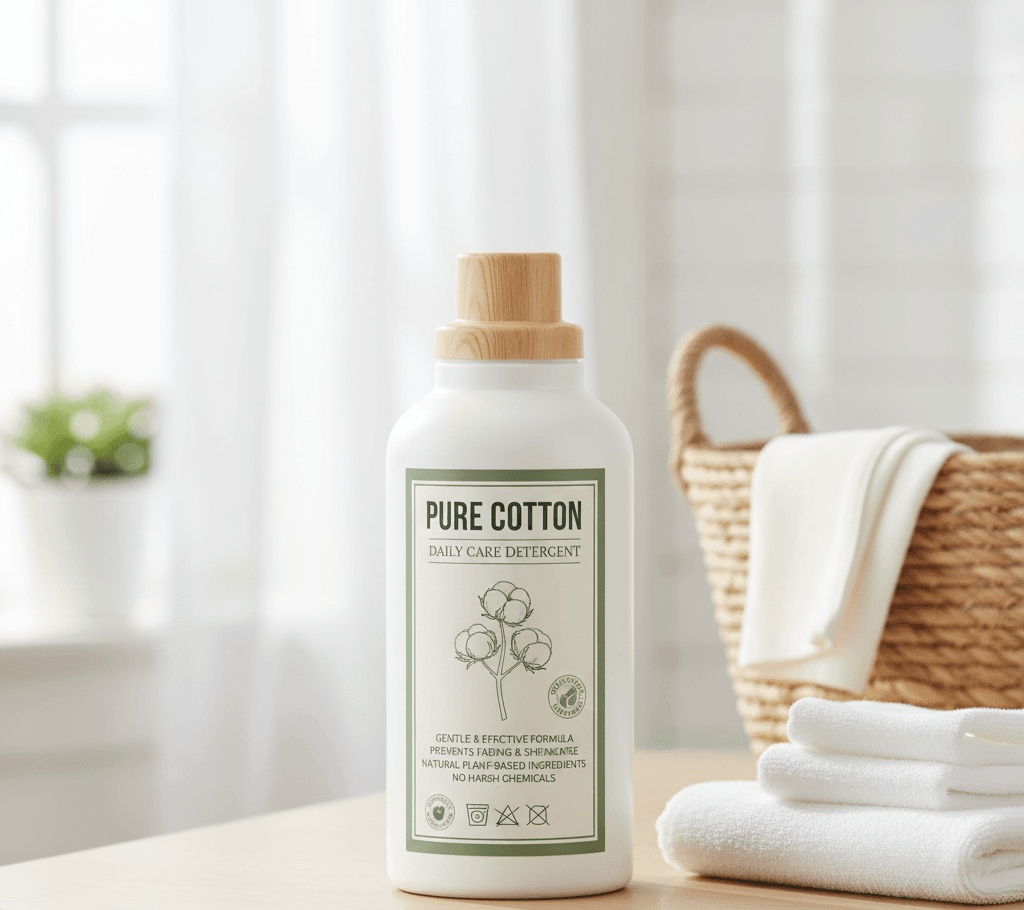
Detergent: Opt for a mild, neutral detergent without any bleaching agents. Using too much detergent can leave a residue that makes fabric feel stiff, so follow the product’s instructions carefully.
Washing Machine Cycle: The best washing machine setting for cotton apparel is typically the Delicate or Gentle cycle. This reduces the mechanical stress on the fibers. Avoid overloading the machine; clothes need room to move freely to get properly clean and rinsed. A machine filled to about 75% capacity is ideal.
Step 3: How to dry fabric to prevent shrinkage?
The Best Method: Air Drying
This is the only zero-risk method for preventing heat-related shrinkage.
(Action Steps):
1. After the wash cycle, gently shake each garment 2-3 times to release deep wrinkles.
2. Reshape the item to its original form, pulling cuffs and hems straight.
(Imagine this): Hang shirts on a hanger to reduce ironing later. Lay sweaters flat on a mesh rack to prevent stretching. The gentle breeze, not intense heat, is what will perfectly dry your clothes.
Using a Machine Dryer: Low Heat is Law
High heat is the number one enemy of cotton. The question of can you put 100% cotton in the dryer has a simple answer: yes, but only on low.
(Action Steps):
1. Select the Low Heat, Air Fluff, or “Delicate” setting.
2. Remove the clothes while they are still 95% dry (very slightly damp to the touch). Over-drying “bakes” the fibers, making them brittle and causing more shrinkage. Let them finish air drying for the last 30-60 minutes.
Special Care for Special Cottons
While the basics apply to all cotton, some specific items deserve extra attention.
How to wash denim?

To preserve the rich indigo color and unique wear patterns (patina), wash denim jeans as infrequently as possible. When you do, turn them inside out, zip them up, and wash them in cold water with other darks on a gentle cycle. This provides the best cotton fabric care for denim.
Any special tips for Bedding & Towels?
How to wash cotton sheets and towels correctly involves a key “don’t”: do not use fabric softener on towels. It leaves a waxy coating on the fibers that significantly reduces their absorbency. For sheets, wash them in warm water to effectively remove body oils and dust mites.
How to wash premium ELS cottons (Egyptian/Pima)?
To protect the precious long fibers of these luxury materials, you must use a gentle cycle and cold water. Following proper pima cotton care instructions means avoiding washing them with heavy items like towels. This preserves the incredible softness and integrity that makes them special.
Conclusion: Golden Rules to Keep Your Cotton Like New
Proper cotton care doesn’t have to be complicated. By following a few golden rules, you can dramatically extend the life of your cotton goods. Remember this simple checklist: always read the label, sort your colors and weights, wash with cold water, and dry on low heat. Understanding fabric characteristics is the first step to caring for them correctly. To learn more, explore our Pure Cotton Fabric Guide.
Frequently Asked Questions (FAQ)
Can I use bleach on white pure cotton?
Yes, but with caution. Chlorine bleach can be harsh and weaken fibers over time. A gentler and safer option is an oxygen-based bleach (often labeled “color-safe”). Always check the care label first; a solid triangle means any bleach is okay, while a triangle with two diagonal lines means only non-chlorine bleach should be used.
How often should I wash cotton sheets?
It is generally recommended to wash cotton sheets once a week (or every two weeks at most). This regularity removes body oils, sweat, and dust mites, ensuring a clean, hygienic, and comfortable sleeping environment.
Should I use fabric softener on cotton clothes?
It’s generally best to avoid it. While it can make clothes feel soft initially, fabric softener works by coating the fibers with a waxy film. This coating can reduce the natural absorbency of towels and the breathability of t-shirts and activewear. A better way to achieve softness is to use wool dryer balls in the dryer on a low-heat setting.





